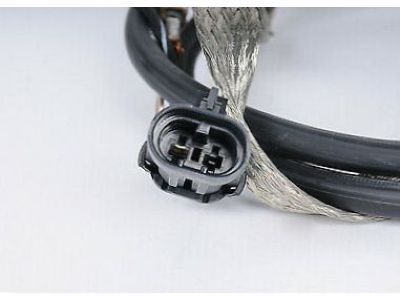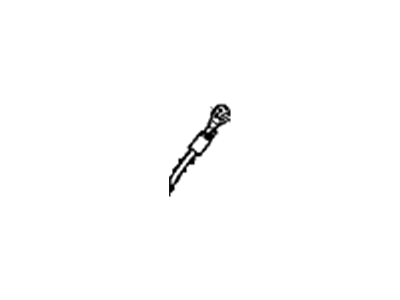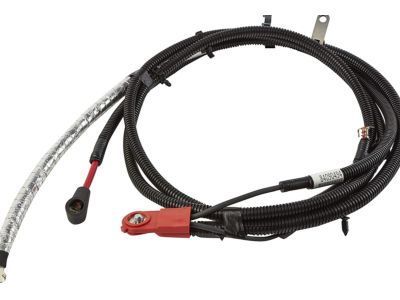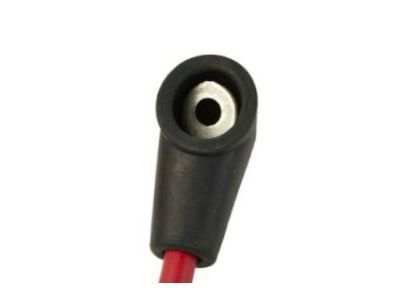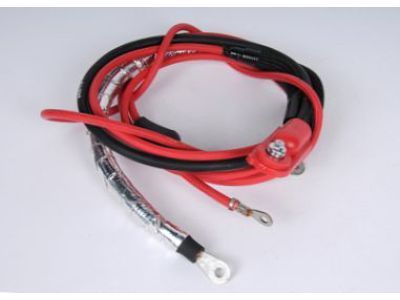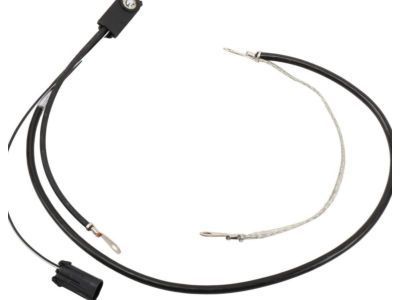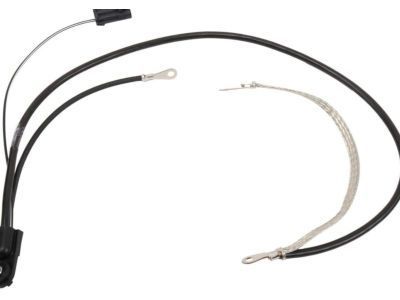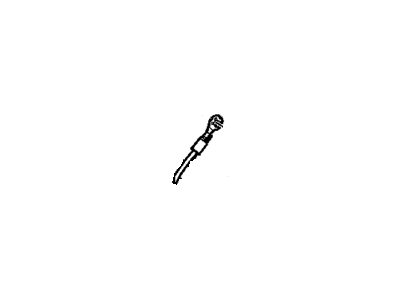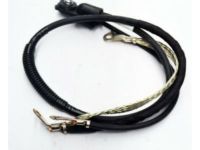
My Garage
My Account
Cart
Genuine Chevrolet Express Battery Cable
Car Battery Cable- Select Vehicle by Model
- Select Vehicle by VIN
Select Vehicle by Model
orMake
Model
Year
Select Vehicle by VIN
For the most accurate results, select vehicle by your VIN (Vehicle Identification Number).
113 Battery Cables found
Chevrolet Express Cable Assembly, Battery Negative
Part Number: 22848163$87.84 MSRP: $190.94You Save: $103.10 (54%)Ships in 1-2 Business DaysChevrolet Express Cable Assembly, Battery Positive
Part Number: 84090494$112.38 MSRP: $244.30You Save: $131.92 (54%)Ships in 1-2 Business DaysChevrolet Express Cable Asm,Battery Positive
Part Number: 88987112$279.31 MSRP: $875.24You Save: $595.93 (69%)Ships in 1-2 Business DaysChevrolet Express Cable Asm,Battery Negative
Part Number: 88986775$60.74 MSRP: $132.04You Save: $71.30 (54%)Ships in 1-2 Business DaysChevrolet Express Cable Assembly, Battery Negative
Part Number: 23220933$72.39 MSRP: $157.38You Save: $84.99 (54%)Chevrolet Express Cable Assembly, Battery Negative
Part Number: 22848162$54.82 MSRP: $119.18You Save: $64.36 (54%)Ships in 1-2 Business DaysChevrolet Express Cable Assembly, Battery Positive
Part Number: 84224167$199.29 MSRP: $370.28You Save: $170.99 (47%)Chevrolet Express Cable Assembly, Battery Positive
Part Number: 84248858$84.11 MSRP: $182.86You Save: $98.75 (54%)Ships in 1-2 Business DaysChevrolet Express Cable Assembly, Battery Positive
Part Number: 84090493$110.37 MSRP: $208.24You Save: $97.87 (47%)Ships in 1-2 Business DaysChevrolet Express Cable Assembly, Battery Positive
Part Number: 22855156$106.20 MSRP: $200.38You Save: $94.18 (47%)Ships in 1-2 Business DaysChevrolet Express Cable Assembly, Aux Bat Pos
Part Number: 84481614$136.07 MSRP: $256.74You Save: $120.67 (47%)Ships in 1-2 Business DaysChevrolet Express Cable Assembly, Bat Neg
Part Number: 84419495$63.95 MSRP: $120.66You Save: $56.71 (47%)Ships in 1-2 Business DaysChevrolet Express Cable Assembly, Auxiliary Battery Positive
Part Number: 84250144$25.54 MSRP: $48.18You Save: $22.64 (47%)Ships in 1-2 Business DaysChevrolet Express Cable Assembly, Auxiliary Battery Positive
Part Number: 23389025$120.24 MSRP: $226.86You Save: $106.62 (47%)Ships in 1-2 Business DaysChevrolet Express Cable Assembly, Aux Bat Pos
Part Number: 84481615$138.10 MSRP: $260.55You Save: $122.45 (47%)Ships in 1-2 Business DaysChevrolet Express Cable Assembly, Battery Positive
Part Number: 84253107$138.40 MSRP: $261.14You Save: $122.74 (47%)Ships in 1-2 Business DaysChevrolet Express Cable Assembly, Auxiliary Battery Positive
Part Number: 23391079$149.51 MSRP: $282.10You Save: $132.59 (47%)Ships in 1-2 Business DaysChevrolet Express Cable Assembly, Battery Positive
Part Number: 84224169$155.36 MSRP: $293.15You Save: $137.79 (47%)Ships in 1-2 Business DaysChevrolet Express Cable Assembly, Battery Positive
Part Number: 23296498$153.24 MSRP: $289.14You Save: $135.90 (47%)Ships in 1-2 Business DaysChevrolet Express Cable Assembly, Auxiliary Battery Positive
Part Number: 23391081$166.24 MSRP: $299.54You Save: $133.30 (45%)
| Page 1 of 6 |Next >
1-20 of 113 Results
Chevrolet Express Battery Cable
Each OEM Chevrolet Express Battery Cable we offer is competitively priced and comes with the assurance of the manufacturer's warranty for the part. Furthermore, we guarantee the speedy delivery of your orders right to your doorstep. Our hassle-free return policy is also in place for your peace of mind.
Chevrolet Express Battery Cable Parts Questions & Experts Answers
- Q: How to inspect and replace battery cables on Chevrolet Express?A:Periodically inspect the entire length of each battery cable for damage, cracked or burned insulation and corrosion. Poor battery cable connections can cause starting problems and decreased engine performance. Check the cable-to-terminal connections at the ends of the cables for cracks, loose wire strands and corrosion. The presence of white, fluffy deposits under the insulation at the cable terminal connection is a sign that the cable is corroded and should be replaced. Check the terminals for distortion, missing mounting bolts and corrosion. When removing the cables, always disconnect the cable from the negative battery terminal first and hook it up last or the battery could be accidentally shorted by the tool you're using to loosen the cable clamps. Even if you're only replacing the cable for the positive terminal, be sure to disconnect the cable from the negative battery terminal first. Disconnect the old cables from the battery, then trace each of them to their opposite ends and disconnect them from the ground terminals, Alternator, fuse box and starter solenoid. Note the routing of each cable to ensure correct installation. If a cable is bundled with another wiring harness, cut the electrical tape tying them together, remove any protective sheathing and separate them. If you are replacing either or both of the battery cables, take them with you when buying new cables. It is vitally important that you replace the cables with identical parts. Cables have characteristics that make them easy to identify: positive cables are usually red and larger in cross-section; ground cables are usually black and smaller in cross-section. Clean the threads of the solenoid or ground connection with a wire brush to remove rust and corrosion. Apply a light coat of battery terminal corrosion inhibitor or petroleum jelly to the threads to prevent future corrosion. Attach the cable to the solenoid or ground connection and tighten the mounting nut/bolt securely. Before connecting a new cable to the battery, make sure that it reaches the battery post without having to be stretched. Connect the positive cable first, followed by the negative cable.
Related Chevrolet Express Parts
Browse by Year
2024 Battery Cable 2023 Battery Cable 2022 Battery Cable 2021 Battery Cable 2020 Battery Cable 2019 Battery Cable 2018 Battery Cable 2017 Battery Cable 2016 Battery Cable 2015 Battery Cable 2014 Battery Cable 2013 Battery Cable 2012 Battery Cable 2011 Battery Cable 2010 Battery Cable 2009 Battery Cable 2008 Battery Cable 2007 Battery Cable 2006 Battery Cable 2005 Battery Cable 2004 Battery Cable 2003 Battery Cable 2002 Battery Cable 2001 Battery Cable 2000 Battery Cable 1999 Battery Cable 1998 Battery Cable 1997 Battery Cable 1996 Battery Cable


